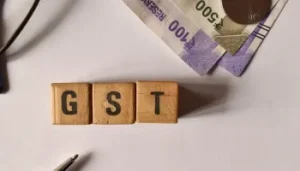New Delhi – The GST Council Measures approved during the two-day meeting represent a watershed moment for Indian businesses, with significant reforms designed to ease compliance burdens and stimulate economic growth. Sources confirm that the council has greenlit transformative changes that will dramatically reduce bureaucratic obstacles for enterprises across all sectors, particularly benefiting medium, small, and micro enterprises along with startup companies.
The most immediate impact of these GST Council Measures involves slashing MSME and startup registration timeframes from the current 30-day period to just three days. This nine-fold reduction in processing time addresses long-standing complaints from entrepreneurs about excessive bureaucratic delays that hamper business formation and expansion efforts.
Additionally, the council approved automated GST refund mechanisms for exporters, eliminating manual processing delays that have historically created cash flow challenges for export-oriented businesses. These GST Council Measures demonstrate the government’s commitment to supporting India’s export competitiveness in global markets.
Comprehensive Tax Slab Rationalization Framework

The centerpiece of the GST Council Measures involves a comprehensive overhaul of the existing four-slab tax structure, with recommendations to reduce the current brackets by half. The existing system featuring rates of 5, 12, 18, and 28 percent will undergo significant restructuring to create a more streamlined and business-friendly taxation environment.
Under the proposed GST Council Measures, approximately 90 percent of goods currently taxed at the highest 28 percent rate will be moved down to the 18 percent bracket. Simultaneously, a substantial portion of items in the 12 percent category will be shifted to the lowest 5 percent slab, creating cascading benefits for consumers and businesses alike.
This rationalization represents one of the most ambitious GST Council Measures since the tax system’s inception, potentially affecting pricing structures across the entire Indian economy. The government anticipates that these changes will boost domestic consumption while accepting an estimated revenue loss of Rs 50,000 crore.
Sector-Specific Benefits and Economic Impact

Eight key sectors stand to benefit most significantly from these GST Council Measures, including textiles, fertilizer, renewable energy, automotive, handicrafts, agriculture, health, and insurance. These industries represent critical components of India’s economic ecosystem, employing millions of workers and contributing substantially to GDP growth.
The automotive and consumer electronics sectors, which operate in labor-intensive environments, are expected to experience particular advantages from the GST Council Measures. Lower tax rates should theoretically translate into reduced consumer prices, potentially increasing unit sales volumes that could offset manufacturers’ concerns about reduced profit margins per unit.
Manufacturing companies in these sectors may be prompted to expand their workforce as increased demand materializes from the rationalized tax structure. The GST Council Measures thus serve dual purposes of stimulating consumption while potentially creating employment opportunities across multiple industries.
Strategic Response to External Economic Pressures
The timing of these GST Council Measures appears strategically designed to counteract potential negative impacts from recently announced 50 percent tariffs on exports to the United States. Government sources indicate that these tariffs could affect exports worth approximately $48 billion, representing a significant challenge to India’s external trade performance.
By boosting domestic demand through reduced taxation, the GST Council Measures provide alternative market opportunities for manufacturers who may face reduced export prospects. This domestic market expansion strategy could help offset losses from restricted access to American markets, maintaining overall economic momentum despite external pressures.
The council’s approach demonstrates sophisticated economic planning that recognizes the interconnected nature of domestic and international market dynamics, using tax policy as a tool for economic resilience.
Exemptions and Continued High-Tax Categories
Certain proposals within the GST Council Measures include complete exemptions for specific goods and services, most notably life and health insurance premiums that currently attract 18 percent taxation. These exemptions reflect social policy considerations aimed at making essential services more accessible to broader population segments.
However, luxury items including tobacco products and high-end automobiles, along with liquor, will continue facing elevated taxation under the ‘sin goods’ classification. The GST Council Measures propose replacing the expiring Compensation Cess with new Health Cess or Green Energy Cess structures, maintaining revenue generation from these categories while promoting social objectives.
This selective approach balances revenue requirements with social policy goals, ensuring that essential goods and services become more affordable while maintaining deterrent pricing for products considered harmful to public health or environmental sustainability.
Middle Class Benefits and Consumer Impact


The GST Council Measures specifically target middle-class consumers who will benefit from reduced prices on daily use items and aspirational goods. While the exact definition of “daily use items” remains unclear, the broader impact should make previously expensive products more accessible to middle-income households.
The government expects that manufacturers will pass through at least partial benefits from reduced tax rates to consumers, though experience suggests that price reductions rarely match the full extent of tax cuts. Nevertheless, even partial price reductions could stimulate significant demand increases among India’s price-sensitive consumer base.
State Government Concerns and Revenue Implications
Despite the positive economic projections, several state governments, particularly those not ruled by the BJP, have expressed concerns about the substantial revenue losses associated with these GST Council Measures. States like Tamil Nadu and West Bengal, both facing elections next year, are among eight states expected to oppose the Rs 50,000 crore revenue reduction.
These states are likely to demand compensation mechanisms to offset lost revenue, potentially complicating the implementation timeline for the approved measures. The council will need to build consensus among all stakeholders to ensure smooth rollout of these transformative tax reforms.
The success of these GST Council Measures will ultimately depend on balancing federal and state interests while maintaining the economic stimulus objectives that drive these comprehensive reforms.

